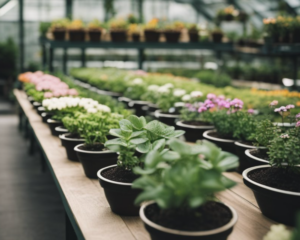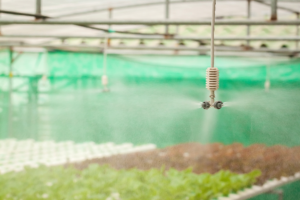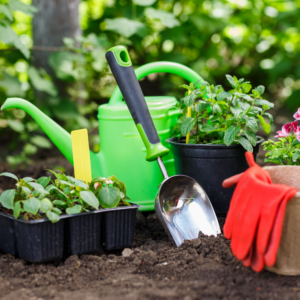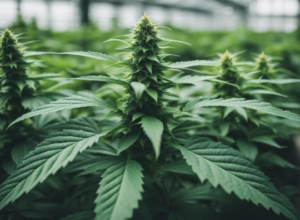Greenhouse shelving isn’t just about squeezing more into your space. It’s about creating an organized, accessible place for your tools, supplies, and, of course, plants. This guide will walk you through the different shelving types, how to pick the best ones for your greenhouse, and tips for setting them up and keeping them in great shape. Plus, we’ll share some creative ways to use shelving to boost your gardening game. Let’s jump into the world of greenhouse shelving and see how it can transform your gardening experience.
Why Greenhouse Shelving Matters
Leveraging Vertical Space
Making the most of your greenhouse’s vertical space is a game-changer for productivity. Here’s how to elevate your gardening strategy:
- Layer Up with Multi-Level Shelving: Adjustable, durable multi-level shelves are your best bet for utilizing all that upward space. They offer organized spots for a mix of plant types and make every inch of your greenhouse work harder.
- Going Up with Hanging Baskets and Hooks: By adding hanging baskets and hooks, you can grow vining plants and herbs up high. This not only looks fantastic but also frees up the floor for bigger plants and your gardening toolkit.
- Green Walls with Vertical Planters: Fix vertical planters to your greenhouse walls to grow herbs, flowers, and small veggies. They’re great space-savers and bring a splash of life and color to your greenhouse’s interior.
Adopting these shelving strategies lets greenhouse enthusiasts fully embrace their vertical space, transforming their greenhouses into areas that are not just more organized and efficient but also more visually appealing.
Streamline Your Gardening Gear
Storing gardening tools—like trowels, pruning shears, and gloves—on shelves means everything you need is right at your fingertips.Thus, eliminating the need to dig through a disorganized pile. Shelving also offers the perfect spot to categorize and keep gardening essentials such as seeds, pots, watering cans, and fertilizers. This will ensure they’re always ready when you are. With everything neatly organized on shelves, planning and carrying out your gardening tasks becomes a breeze. Ultimately, leading to a garden that’s not only easier to manage but also more productive and enjoyable.
Exploring Greenhouse Shelving Options
Wire Shelving
Many greenhouse enthusiasts go for wire shelving because it’s both light and strong. It’s great for keeping air moving around your plants, which helps keep them healthy. Plus, wire shelves are super easy to clean and rearrange. They give you the flexibility to change up your space as your garden grows.
Wooden Shelving
Bringing in wooden shelves adds warmth and a natural vibe to your greenhouse. They’re solid, offering a timeless look that really makes your plants stand out. And the best part? You can tweak and tailor wooden shelves to fit the unique requirements of your plants.
- Long-lasting: Wooden shelves are built to last, easily handling the humid, warm conditions of your greenhouse.
- Moisture Friend: Wood’s natural ability to absorb and release moisture can help keep your greenhouse’s humidity just right for your plants.
- Natural Insulator: Wood helps keep temperature levels steady, making your greenhouse a consistently cozy spot for plants.
- Planter-Friendly: These shelves work beautifully with various planters and pots, creating an integrated look that’s both practical and pleasing to the eye.
Metal Shelving

For those who need their shelves to pack a bit more punch, metal shelving is the way to go. It’s tough enough to support heavy pots and tools without breaking a sweat. Adjustable metal shelves mean you can easily make room for plants as they grow or change things up according to your gardening needs.
Choosing the Right Greenhouse Shelving
Size and Weight Capacity
When hunting for the perfect shelving for your greenhouse, start by sizing up your space and figuring out how much weight you’ll need your shelves to hold. It’s all about finding a balance between fitting your plants and gardening gear without sacrificing the shelf’s stability or safety.
Built to Last: Durability and Weather Resistance
Choosing shelves that can stand up to the humid, ever-changing climate of a greenhouse is key. You want materials that won’t give in to rust, corrosion, or bending over time. Here’s how to make sure your shelves can go the distance:
- Material Matters: Aim for shelving made from materials like powder-coated steel, aluminum, or resin, known for their resilience against moisture, humidity, and temperature shifts.
- Coatings and Treatments: Beyond the raw materials, look for shelves with extra protective layers like zinc plating for corrosion resistance or UV coatings to combat sun damage.
- Solid Construction: The design of your shelving should be ready to bear the load of your plants and tools. Features like reinforced frames and robust connectors add to shelf life.
- Proven Performance: Seeking out shelving that’s been tested and certified to handle harsh greenhouse conditions gives you that extra peace of mind. Certifications are a plus, signaling quality and durability.
Versatility with Adjustable Shelves
Adjustable shelving hits the sweet spot of flexibility. They let you tweak and tailor your setup as your plants grow and your needs evolve. With the ability to shift shelf heights, you can create the perfect environment for every stage of plant growth. Ultimately, ensuring your greenhouse remains a dynamic and adaptable space.
Installation and Maintenance Tips
Proper Installation Techniques
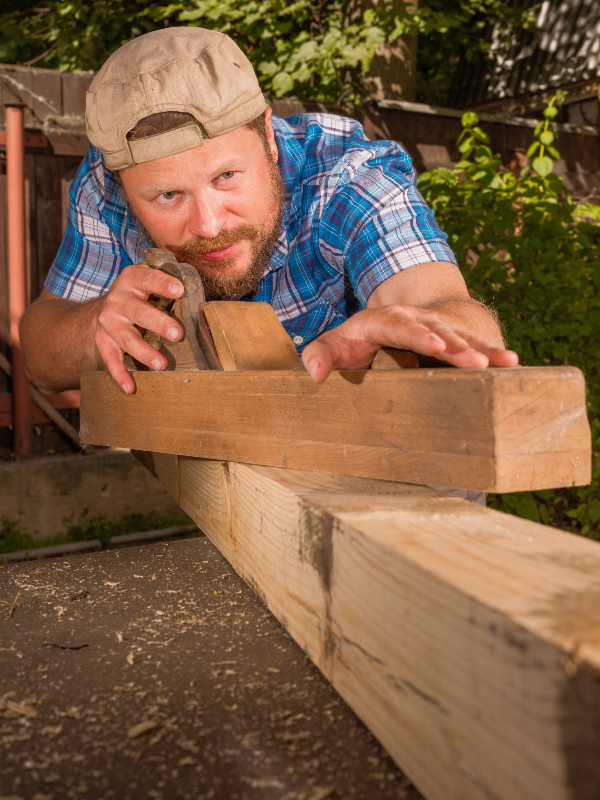
Proper installation of greenhouse shelving is essential for ensuring safety and longevity. Here are detailed techniques to follow during the installation process:
- Secure Anchoring: Anchor the greenhouse shelving securely to the greenhouse structure using appropriate fasteners. Opt for heavy-duty screws and anchors to ensure stability.
- Manufacturer’s Guidelines: Adhere closely to the manufacturer’s guidelines for installation. This includes following specific instructions for attachment points and weight-bearing capacity.
- Leveling and Alignment: Use a level to ensure that the shelving units are installed evenly and aligned properly. This step is critical for the overall stability and uniform weight distribution.
- Fastener Selection: Choose the right type and size of fasteners to match the greenhouse material and shelving design. Consider factors such as corrosion resistance and load-bearing capacity.
- Structural Integrity: Check the greenhouse structure for any weak points or damage that may affect the installation. Address any structural issues before proceeding with the shelving installation.
By meticulously following these techniques, you can ensure that the greenhouse shelving is not only securely in place but also poised for long-lasting performance.
The Setup and Care For Your Shelving
Putting up your greenhouse shelving the right way is crucial for both the safety of your garden and the durability of the shelving itself. Here’s a breakdown of key steps for a solid setup:
- Sturdy Setup: Make sure your shelving is firmly anchored to the structure of your greenhouse. Use heavy-duty screws and anchors for a solid hold.
- Follow the Book: Stick to the installation instructions provided by the shelf’s manufacturer to the letter. Pay special attention to how it should be attached and its capacity to bear weight.
- Keeping it Level: A spirit level is your best friend here, ensuring your shelves are perfectly horizontal and aligned. Proper leveling is key to keeping everything stable and evenly distributed.
- Choosing Fasteners Wisely: The fasteners you use should be suited to both the material of your greenhouse and the type of shelving. Look for options that resist corrosion and can handle the load.
- Inspect the Framework: Before you start, examine your greenhouse’s frame for any signs of wear or weakness that could impact your shelving. Fix any issues first to guarantee a smooth installation.
By paying attention to these installation steps, you’re setting up your greenhouse shelving for a secure fit and a long life, ready to support your gardening endeavors.
Creative Ideas for Greenhouse Shelving
Elevating Your Green with Vertical Gardening
Vertical gardening turns the concept of greenhouse shelving into a dynamic, space-efficient garden. It allows you to stack plants on various levels, making the most of your greenhouse’s space and the available sunlight. Beyond just looking great, vertical gardening improves plant health, ease of access, and your garden’s yield.
Building a Seed Starting Station
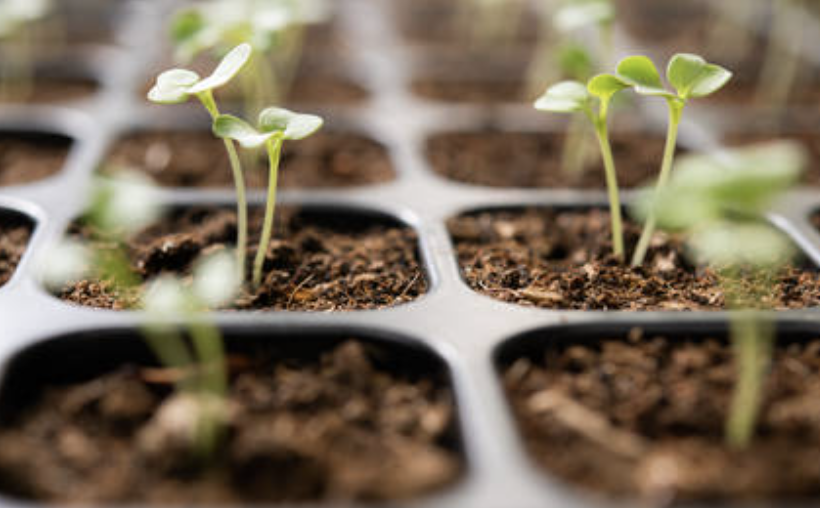
A specialized area for starting seeds kickstarts your gardening season on the right note, ensuring seeds sprout into vigorous seedlings. Here’s how to set up a prime seed-starting zone:
- Spot Selection: Find a spot with plenty of light or set up some grow lights for that vital light spectrum seeds crave.
- Shelving Prep: Opt for robust, adjustable shelving that can hold your seed trays or pots, and make sure it’s a breeze to clean.
- Warmth is Key: Seeds need a cozy 65-75°F (18-24°C) to wake up and grow. Use heating pads or a thermostat-controlled environment to keep things snug.
- Humidity and Air Flow: Keep the air moist with a humidity dome or a misting setup, and use a small fan to keep the air moving and fend off any mold or mildew.
- Label and Track: Mark your seed trays with labels for easy identification and jot down notes on their progress for future reference.
- Have Supplies at Hand: Organize your seeding mix, pots, trays, watering tools, and nutrients nearby for hassle-free access.
- Tend to Your Seedlings: Watch over your young plants for any health issues, giving them the TLC they need to grow strong.
Herb and Spice Storage
Turning your greenhouse shelves into a neatly organized, fragrant storage area for herbs and spices is a smart and aromatic enhancement. With the right shelving setup, you can keep everything well-ventilated, easily accessible, and orderly. Here’s how to get the best out of your herb and spice storage in the greenhouse:
- Smart Shelving Location: Pick a spot for your shelves that gets plenty of sunlight and is within easy reach for upkeep and picking.
- Choosing Containers: Go for clear, labeled jars or airtight containers for your herbs and spices, making it simple to spot what you need and keep everything fresh.
- Organizing with Purpose: Group your herbs and spices by their use—think culinary delights, medicinal must-haves, or frequently used spices—to streamline your gardening and cooking processes.
- Airflow is Key: Make sure your storage setup allows air to circulate freely around the containers to preserve the quality and aroma of your herbs and spices.
- Herb-Specific Sections: Allocate parts of your shelving to specific herbs, giving them the ideal conditions they need to flourish and be easily harvested.
With these steps, and adding your unique flair, you can turn your herb and spice storage into a functional and enchanting feature of your greenhouse.
Conclusion
To sum up, greenhouse shelving is more than just a practical solution for space management—it’s a way to elevate your entire gardening experience. Through careful selection, strategic setup, and a dash of creativity, you can transform your greenhouse into a space that’s not only efficient and tidy but also a joy to work in. Shelving opens up a world of possibilities for better plant care. Ultimately, this means more enjoyable gardening, and a productive garden oasis.


